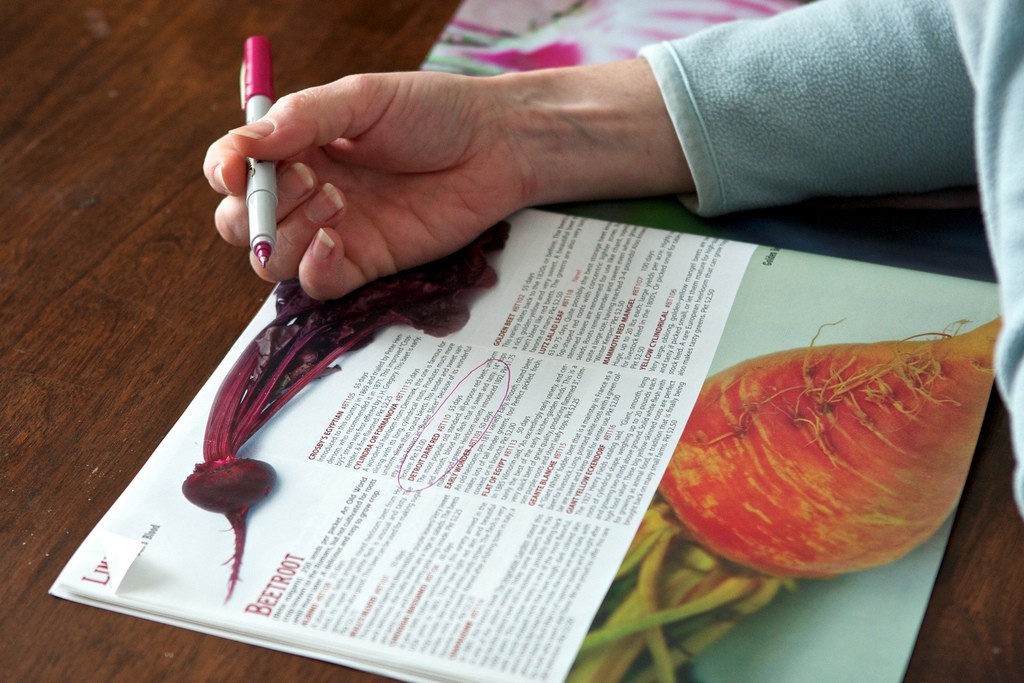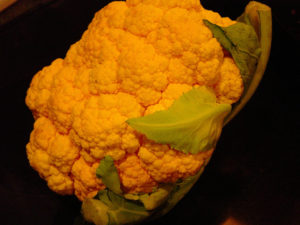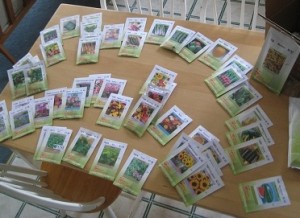The glossy temptations of midwinter

Winter gardening recreation–ordering seeds. Photo: Susy Morris, Creative Commons, some rights reserved
Now that all the festivities are wrapped up, many of us have noticed that the days are still short and the nights long. Plus it’s cold. With no more parties to look forward to and no holidays in the offing for a while, it’s normal to cast about for distractions. It’s a time when some of us give in to the temptation of certain types of publications. You know what I mean. The ones with glossy pages and full-color pictures that make our hearts beat faster. And though we want to believe we’re adequate, we can’t help but compare. Those perfect shapes, those perfect sizes. Oh, the heartbreaking seduction of seed catalogs!
It isn’t fair, really. We’re at such a vulnerable time and they flaunt their mounds of orange cauliflower, purple carrots, yellow, green and red peppers. It makes a person want just about every variety of every vegetable. Never mind that despite our best efforts, our produce has never been as voluptuous, or as brilliant of color, as the catalog pictures. This year it will be different, we tell ourselves, as we proceed to order more than we intended.

Orange Cauliflower. Photo: Heather Kannedy, Creative Commons, some rights reserved
This season might in fact be different. Each year there are always a few new plant varieties that are resistant to various viral, fungal or bacterial diseases, or that tolerate adverse site conditions. It means we do have an increased chance of success this year. Cornell has just finished compiling its 2019 list of Selected Vegetable Varieties for Gardeners, which you can find at http://vegvariety.cce.cornell.edu/main/login.phpor contact your local Cornell Extension office.
The list includes the tried-and-true varieties along with new offerings, and notes what varieties are resistant to what diseases. This year there are a number of new tomato varieties which have multiple disease-resistance, and reportedly have good flavor as well.
Buying colorful or odd-shaped novelty varieties helps keep the fun in gardening, and I encourage it. But those seldom hold up in terms of yield or disease resistance. The ordinary, dependable types generally translate to less work and more food for your buck. Another money-saving tip is to consolidate seed-buying. If a group of people divvy up a half-ounce of carrot seeds, for example, instead of each buying two packets, the price difference is amazing.
Unfortunately, some common plant diseases such as Septoria spot and early blight, which affect tomatoes and their kin, are seed-borne. A Cornell vegetable expert once said that of the four aspects of plant disease prevention, the first one is getting disease-free seeds. (The others are sanitation, sanitation and sanitation, in case you’re wondering.)
Since infected seeds look identical to disease-free ones, the only way to be safe is to ensure they’ve been treated with hot water or a sanitizing agent. Evidently, seed companies have found that Goldilocks-perfect temperature hot enough to kill diseases but not so hot that it kills the living plant embryo inside the seed. A dilute sanitizer solution is also used.
Along with the sexy purple snap beans and black tomatoes, get some disease-resistant varieties, and be sure that your seed company hot-water treats its seeds. And try not to get those catalog pages all messy; someone else might want a look at it after you.
Paul Hetzler is a horticulture and natural resources educator with Cornell Cooperative Extension of St. Lawrence County.
Tags: disease resistance, gardening, seed catalogs








